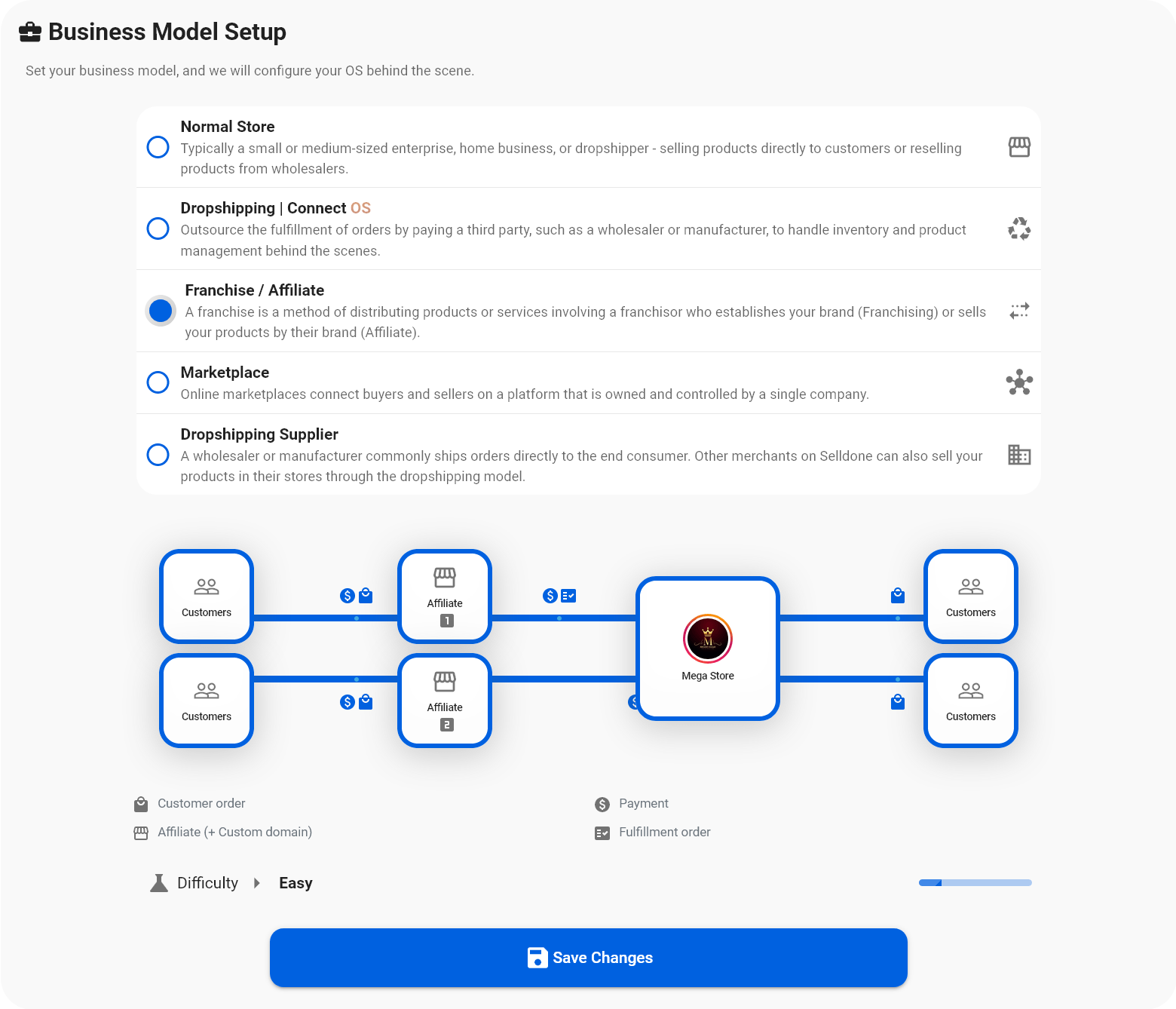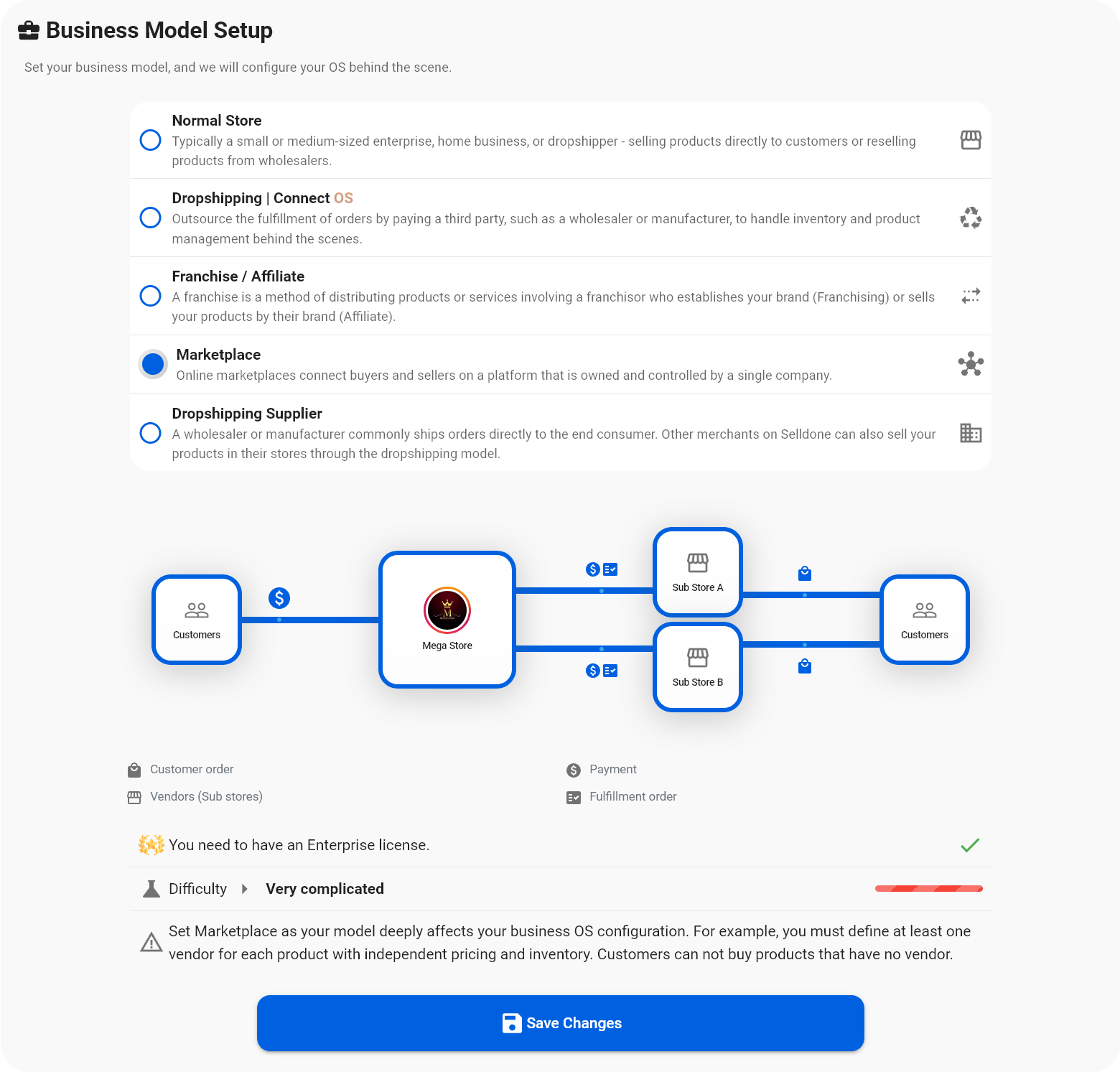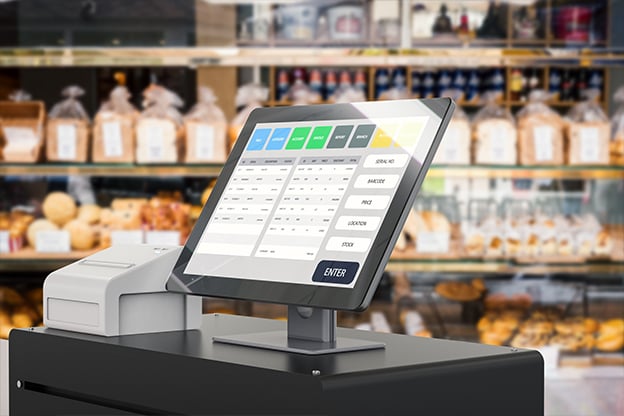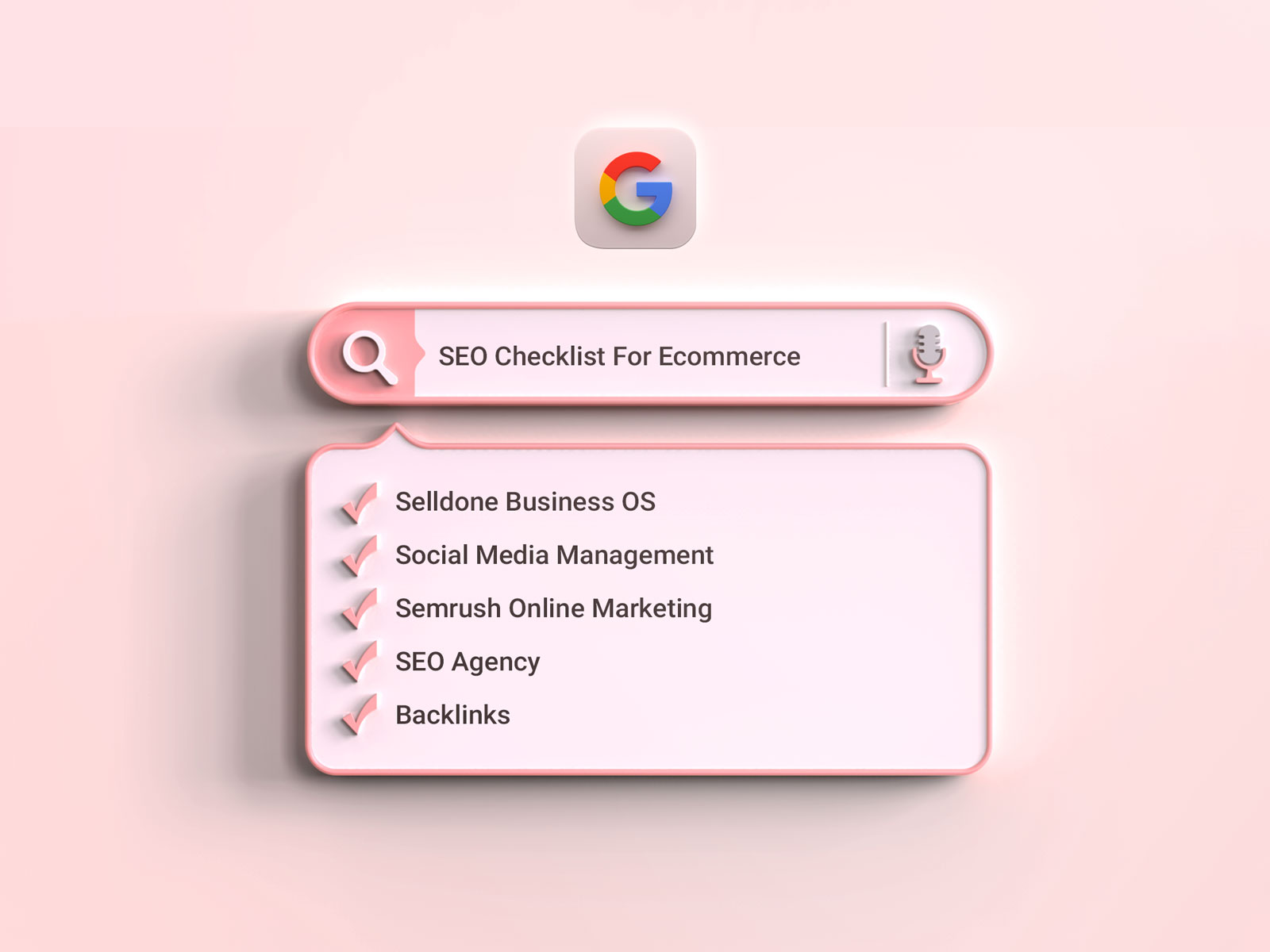Best Ecommerce Business Model for Small and Medium Enterprises

A successful business needs efforts such as good market research, a solid business plan, intuition, and knowing the product and business models. In starting an ecommerce business, it's pretty much easy to get all excited about and want to perform all of the new ecommerce trends. But one of the problems is that most beginners and newcomers to this industry will face a profitability wall and can't get much profit and don't seem to get enough revenue into their business.
Many ecommerce businesses could have bloomed into mature, profitable companies with attractive revenues and on the path of reaching their goals, one by one. Unfortunately, though, their business owner or the team responsible for its foundation didn't have much information about ecommerce business. More specifically, they are unaware of how ecommerce businesses are set up and what different business models exist; this defines how a particular company is being run and exactly what kinds of ecommerce are out there.
So, if those intending to become a business owner and achieve their dreams, they first need to know about different business model types that work and apply them to their business to succeed. If you are also on your way to creating and managing a successful ecommerce business, you first need to familiarise yourself with these business models. So, keep on reading this article as we will mention those business models that are practical and will work; without further ado, let's begin.
Best ecommerce businesses models that will work
An ecommerce business is any business that will use the Internet to connect buyers to sellers. So the first thing you need to do is define the type of business your startup or company will work on. You know that your role is the seller in this process, but do you know who the buyers are? Who are you going to sell your products to? One of the biggest questions you need to answer as a business owner is defining who the buyers are. Would you describe your business as a B2B or a C2B? Are you familiar with any of these terms, or does reading them make you feel dizzy and want to punch stuff and throw things off your work desk!?
If you already know what those terms mean and which type of business each of them stands for, you are in luck as reading this article is easier for you, and you already have a sense of what's going on. But even if you've never heard or seen such a thing as B2B, you don't need to worry. We will cover each business model one by one to make sure you will understand what they are and what exactly they mean. So, let's begin.
B2B business model: Business to Business
The first model we're going to talk about is B2B. A Business to Business (B2B or BtoB) model is simply a business where one business is the seller, the supplier, and another business is the buyer or demands what the first business supplies. B2B refers to a company that conducts business by providing services, goods, and materials to other businesses.
You may think that the only businesses working in this niche are service providers; this is not the case. Many of the companies that use this business model are service providers, but many are not. Many of them are documented hosting companies; there is also an office furniture business in this category, software companies are B2B and some electronic hardware companies.
Business 2 Business (B2B) is a standard model for companies and firms in manufacturing. For example, Samsung and Apple's transactions and relationships are also B2B. While it's true that these companies are in competition in mobile phone, laptops, and gadgets manufacturing and have the same type of customer base in some fields, Samsung is one of Apple's biggest suppliers in the production of the iPhone. Apple has B2B relationships with other manufacturers and businesses such as Panasonic, Intel, and Micron Technology.
B2B is a popular business model in the automobile manufacturing industry too. A lot of vehicle components are manufactured independently by different companies. These other parts and components are then purchased by auto manufacturers later and used to assemble cars. Door locks, lights, screws, hoses, and tires, for example, are manufactured by various companies and then sold to auto manufacturers such as Toyota or BMW to make and assemble cars that end up driving down the streets.
Software development is a popular industry in which small businesses can compete with large business owners. It's a relatively new business, and it uses a B2B model. Software companies are categorized as B2B businesses as well. A company that consists of software developers, creating and developing software, a website, or a smartphone application which a different company then buys to use as a platform to conduct business, as a way to transact with their customers.
B2C business model: Business to Consumer
This is one of the most famous business models out there; this model is widely known even to those unfamiliar with business models. The B2C is the business model of a business traditionally conducting business. A business is supplying goods and materials and selling to individual consumers. They may also provide a service such as the companies offering space cleaning services to individuals and homeowners. This is the deepest market out there; many of the names mentioned when talking about B2C model businesses are also known offline. Many B2C ecommerce businesses also have real-world stores and own local shops in which they offer products to their customers physically.
So B2C is the old fashion way that a business conducts, it's the shop selling to individuals passing by the store, the same as how an online ecommerce platform does business, but instead of having a local store and a physical place, it's an ecommerce. Hence, the shop is a website or an application that customers use to purchase your products or order and use your services. Your services could be online as well, like language tutoring platforms. You, as the consumer, pay a fixed amount of money to buy the platform's subscription and use that platform to learn a new language you always wanted to.
An example of the B2C model is Walmart, which provides an environment for small merchants and retailers to showcase and sell their products online and reach a broader audience.
C2C business model: Consumer to Consumer
This one is a little different from the last two business models, as the previous ones were in a way familiar to us; we could imagine how a B2B or a B2C business would work and process the transactions, but how does a C2C business model work? How does a company following the C2C model operate, and if both parties are consumers, how are they conducting business?
A C2C is a business model in which a consumer can sell a product or provide a service for another consumer and get paid for doing so. To put it more simply, a consumer to consumer business is a platform that allows consumers to interact with each other and to sell and buy goods and services, do transactions, and have a give and take the relationship in which one consumer helps another consumer to have their needs taken care of. While allowing the sale to be made, the products being sold, and services offered, the platform takes a small fee for making the transaction possible.
As a result of people getting comfortable with purchasing online, trusting in ecommerce platforms, and getting things done online, consumers are putting a lot more trust in the ecommerce industry as a whole.C2C businesses let consumers trade, buy, sell any of their products or to offer their services online only to take a percentage of it as a commission fee. Creating and managing a business running on a C2C model successfully takes a lot of careful planning and the proper execution; that's why many companies with a C2C business model have opened and closed very fast, because the business model was, in fact, unsustainable and unreliable.
To name a few companies and businesses using a Consumer to Consumer business model, Craig's eBay is a great example and a very successful one.
C2B business model: Consumer to Business
A C2B business model is not as standard as the other types. It doesn't often happen that you see someone thinking about building a business that uses a Consumer to Business model. Nowadays, this business model is gaining more popularity, though it is more appreciated.
In C2B strategies, the consumer is providing a product or offering a service that appeals to a business, not a business providing products and services to consumers. In a C2B business, it's the end-user or the customer providing the product or services for businesses, for example, reverse auctions paid testimonials.
To name a few more popular ways a C2B operates, take referral programs or affiliate marketing as an example. The end-user is doing the service of referring a business and their product or services to their audience, who can be friends, relatives, or fans. So the one who is referring to the company is the one doing a service of guiding and is getting a percentage as an affiliate fee for every product they sell or every new subscriber they get.
Other types of business models
The business models mentioned above are the primary ones, the main business models that should be used by ecommerce business owners and entrepreneurs who want to succeed through a sustainable business model and a trustworthy strategy. Other business models, though, such as C2G and G2B, are not very suitable for an ecommerce business.
Business models based on management and revenue
Other things you may want to consider are how you want to manage the inventory, or to put it in other words, how are you going to supply the products you are going to sell, and after you sell them, how are you going to get that item to your customer. This is one of the essential parts of your strategy and, if chosen correctly, could affect your whole business altogether.
I.Dropshipping
Dropshipping is one of the most straightforward ways to handle orders and get the products to your customers. It could be beneficial for small businesses that will cut some expenses such as the warehouse rent, transportation of the products from the supplier to the inventory to send them out again, managing the stock, and the process of packaging. But what is Dropshipping actually, and how does it work?
Dropshipping is finding a supplier and forming the sort of contract that they send the products to your customers, so they are handling products, packaging, and shipping the products altogether, so you see how Dropshipping is very simple. But like every other thing in this world, Dropshipping also has some downsides aside from the good parts.
Suppose the supplier is slow on delivering the package, the product has lower quality than expected, or the packaging was messy and didn't wow your customers. In that case, it will have some adverse effects that will show themselves as problems on your hands and nasty comments in your reviews.
Aside from that, Dropshipping can be very profitable and could work for some businesses and could help you make money. You can find Dropshippers on Selldone ready to work with you if you think that Dropshipping is your cup of tea.
II.Wholesaling
Another method you can use for sourcing products is Wholesaling. Wholesaling and warehousing can be a good way for you if you have and are willing to invest a lot more money at the beginning of your business. Wholesaling needs a lot of money to pull off as you need to pay rent for the warehouse, stock your products, hire staff to manage the packaging of your products and keep track of your customers' orders and shipping of your final product.
So, the key to wholesaling is volume. The more products you stock, the bigger audience you need to reach to sell your products. To get and find your customer base, you need to show off and advertise your products on eBay, Amazon, etc.
III.Subscription
With a subscription model, you commit to sending products to your customers continuously over a predetermined period on a particular day, a month, or a week (depending on the interval of your subscription plan). There can be different subscription plans, such as product discovery or complete services.
Businesses that can use the subscription model are publishing companies, food, beauty, or even pet-related products.
IV.White Labeling
White labeling is to find a specific product that is popular and trending right now, order it from other companies who are selling it, and re-label the product and sell it as a product of your own company. This is tricky as you need to find and work with companies and businesses willing to do that. White labeling is standard in the beauty and wellness industry and doesn't seem popular in any other industry.
The problem with white labeling is that a lot of these companies have the least minimum quantity for the products you're ordering, so if you have called a certain amount of a product, that means that you have to sell them as you are now stuck with what you got. Pick white labeling method if you're comfortable working full time on your business and know that the demand for your products is high so you wouldn't have trouble selling what you ordered.
V.Private Labeling:
Private labeling is similar to white labeling. You can use private labeling if you have an idea for a product that you know will be appreciated by the audience, and your customers will love it. Still, you don't have the money or the intention to build a factory to manufacture the products yourself.
In private labeling, a manufacturer sends plans of creating a particular product to a contracted manufacturer, which will make the product specifically ordered by the customer and send it to your warehouse, to your customer, and to different companies such as Amazon.
How to choose the best business model?
Now that you know different business models and are familiar with other shipping and inventory management, and additional revenue options you can choose from, it's time to start from building the base by selecting the suitable business model for your idea to take shape into a real-time ecommerce business one day. Three factors should be considered and must affect your final choice.
What makes your business valuable?
A big part of knowing your business's worth is understanding the advantages you bring to the table. To fully grasp the value of your ecommerce business, you must answer the following questions: What makes you different from your competitors? What is that thing that makes your business idea so unique? Is it the lower price or the higher quality of your products? Is it how you deliver the products to your customers? Or maybe it's your perfect customer service and how you support and solve the problems of your customer base by fully answering their concerns?
It would be best to consider what you are not good at and how your competitors may get the best of you. Is your delivery system flawed, and you deliver the products later than promised? Could your packaging improve in any way that better appeals to the consumer? Could you in any way improve the ecommerce platform which your customers use to order the products?
By fully understanding the advantages and the shortcomings of your business, you get a realistic view of how things are and how they are supposed to be.
Understanding your consumers:
Knowing your customers well enough could be a defining factor in the success of your business. Here are some examples of the questions you need to be asking about your customers to understand where they are coming from, what their needs are, and in what way your business can be helping them, whether it's by the product you sell or the services that you offer to them.
Who are your customers? What are their likes and dislikes? How will the product or service you offer to them change their lives for the better? What marketing angles can you try to increase your customer base in size?
By answering these questions and many more, you should grasp your customer's personalities. By understanding that, you can choose a better business plan and find out how you can change your ecommerce business idea that better helps your customers, causing them to be more comfortable buying your products.
How should you sell your products?
How should you sell and deliver the ordered products to your customers that make more sense? And, of course, the way you supply your products dramatically affects how you should be giving them. If you are the manufacturer and you're making your products, maybe using a subscription plan or wholesaling is a more logical way to offer your products.
If you are using a different method to supply your products and are selling products made by other manufacturers, you could try different methods. Such as dropshipping or whatever other way you use makes more sense for you and allows you to focus on your branding, better marketing your brand, and growing your customer base.
Setup Business Model: Normal online shop
A normal online shop, also known as an e-commerce store, is a business model where a company sells products or services through an online platform. The products and services are usually delivered to the customer through shipping or digital delivery.
Pros of normal online shop:
- Convenience: Online shopping allows customers to purchase products and services from the comfort of their own homes at any time, making it a convenient option for busy customers.
- Wider reach: An online shop allows a business to reach a larger customer base, as the store can be accessed from anywhere in the world.
- Lower overhead costs: Operating an online store typically requires less overhead costs than a brick-and-mortar store, as the business does not need to pay for physical space and utilities.
- Automation: Online shops allow for automation of many tasks such as inventory management and order fulfillment.
- Personalization: Online shops allows for personalization such as tailored marketing and customer service based on purchase history.
Cons of normal online shop:
- Lack of personal interaction: Online shops do not provide the same level of personal interaction as brick-and-mortar stores, which can make it more difficult to build customer loyalty and trust.
- Shipping and handling costs: Depending on the location of the customer, shipping and handling costs can be high, which can make the product less competitive.
- Technical issues: Online shops are dependent on technology and internet connection, which can lead to technical issues that may impede sales and customer service.
- Return and Refunds: Online shops may face issues with returns and refunds, as customers may not be satisfied with the product after receiving it.
- Legal requirements: Online shops may have to comply with different legal requirements depending on the location of the business and customers.

A normal online shop, also known as an e-commerce store, is a business model where a company sells products or services through an online platform. It has many advantages such as convenience, wider reach, lower overhead costs, automation and personalization, but also has its own cons such as lack of personal interaction, shipping and handling costs, technical issues, return and refunds and legal requirements.
Setup Business Model: Dropshipping (Reseller)
Drop-shipping is a business model where an online store doesn't keep the products it sells in stock. Instead, the store purchases the products from a third-party supplier, who ships the products directly to the customer. This allows the store to offer a wide variety of products without having to maintain a large inventory or worry about shipping and handling.
Pros of drop-shipping business model:
- Low startup costs: Starting a drop-shipping business requires less capital than traditional brick-and-mortar retail businesses.
- Low overhead costs: With drop-shipping, you don't need to pay for warehouse space, inventory, or shipping and handling.
- Flexibility: Drop-shipping allows you to easily test new products and marketplaces without a significant investment.
- Scalability: As your business grows, you can simply add more products and suppliers to your store without having to worry about increasing your inventory or shipping costs.
Cons of drop-shipping business model:
- Lack of control: Drop-shipping relies on third-party suppliers, which means that you have less control over the quality of the products you sell and the shipping time.
- Limited branding: With drop-shipping, you may have less control over the packaging and branding of the products you sell, which can make it harder to create a strong brand identity.
- Margins may be low: Because you don't have control over the costs of the products you sell, your profit margins may be lower than if you were to purchase the products wholesale and sell them at a markup.
- Competition: The drop-shipping model is becoming more popular, and with more competitors in the market it may be harder to stand out.

Drop-shipping is a low-cost and low-risk business model that can be a great way to start an online store. However, it also has its drawbacks, such as lack of control over the products and limited branding opportunities. It's important to weigh the pros and cons of the drop-shipping model before deciding if it's the right fit for your business.
Setup Business Model: Franchise and Affiliate
A franchise business model is a type of business model in which an individual (the franchisee) is given the right to operate a business using the trademark, products, and systems of an existing business (the franchisor). The franchisee typically pays an initial fee and ongoing royalties to the franchisor in exchange for the use of the franchisor's trademark, products, and systems.
An affiliate business model is a type of business model in which an individual (the affiliate) promotes and sells another company's products or services in exchange for a commission. The affiliate typically receives a unique link or code that they can use to promote the products or services, and they are paid a commission for any sales that are made through that link or code.
The pros of a franchise business model include:
Established brand recognition: The franchisee can leverage the franchisor's established brand recognition to attract customers.
Proven business model: The franchisee can follow the franchisor's proven business model to increase their chances of success.
Support and training: The franchisee typically receives support and training from the franchisor to help them operate the business.
The cons of a franchise business model include:
Limited autonomy: The franchisee must follow the franchisor's rules and guidelines, which can limit their autonomy in running the business.
Ongoing royalties: The franchisee must pay ongoing royalties to the franchisor, which can be a significant ongoing cost.
Limited flexibility: The franchisee may not be able to make changes to the business without the franchisor's approval.
The pros of an affiliate business model include:
Low startup costs: The affiliate typically does not need to invest in inventory or other assets to start the business.
Flexibility: The affiliate can choose which products or services to promote and can promote them in a way that aligns with their own brand.
No ongoing costs: The affiliate is only paid a commission on sales, so there are no ongoing costs.
The cons of an affiliate business model include:
Limited income potential: The affiliate's income is typically limited to the commission they earn on sales.
Limited control over the product: The affiliate has no control over the product or service they are promoting and will not have any control over the customer service or quality of the product.
Limited brand recognition: The affiliate does not have the established brand recognition that a franchisee would have.

Both franchise and affiliate business models have their own pros and cons and it's important to weigh them before deciding which one is suitable for your business goals.
Setup Business Model: Multi-vendor marketplace
An online marketplace business model is a type of e-commerce platform where multiple third-party sellers can list and sell their products to customers. The marketplace operator acts as a facilitator and takes a commission on each sale made through the platform. Examples of popular online marketplaces include Amazon, Etsy, and UberEats.
Pros of an online marketplace business model include:
Low barrier to entry: It is relatively easy and inexpensive to launch an online marketplace, as the operator does not have to hold inventory or handle shipping and fulfillment.
High scalability: Online marketplaces have the potential to reach a large audience, which can lead to rapid growth and increased revenue.
Variety of products: With a wide range of sellers offering a diverse selection of products, online marketplaces can offer customers a wider range of options to choose from.
Cross-selling opportunities: Marketplaces can cross-sell products from different sellers to customers, increasing the chances of making a sale.
Cons of an online marketplace business model include:
Increased competition: With multiple sellers listing their products on the platform, it can be difficult for any one seller to stand out and attract customers.
Limited control over the customer experience: The marketplace operator has less control over the customer experience, as they are reliant on the actions of individual sellers.
Dependence on third-party sellers: The success of an online marketplace is heavily dependent on the number and quality of third-party sellers using the platform.
Commission and Fees: Online marketplaces typically take a commission on each sale, which can reduce the profit margin for sellers.

The online marketplace business model can be a highly scalable and profitable option for entrepreneurs, but it also comes with its own set of challenges and limitations. It's important to carefully weigh the pros and cons before starting an online marketplace business, and to have a clear strategy in place to manage and overcome the potential challenges.
Setup Business Model: Dropshipping supplier
An online wholesale supplier business model is a type of e-commerce model where a supplier sells products to retailers at a bulk discount, and the retailers then sell the products to consumers at a markup.
In the case of dropshipping, a retailer can sell products without having to keep inventory or handle shipping. The retailer simply takes orders from customers and forwards them to the supplier, who then ships the products directly to the customers. This allows retailers to start an e-commerce business with minimal upfront investment and risk.

The main advantage of this business model is the low startup cost and minimal risk. Since the retailer doesn't have to buy products in bulk, they don't have to worry about unsold inventory. Additionally, retailers can offer a wide range of products without having to invest in expensive inventory. Another advantage is that retailers can focus on marketing and customer service rather than on the logistics of product fulfillment. This can help to grow the business more efficiently.
However, there are also some downsides to this business model. One of the main disadvantages is that the retailer has less control over the product quality and shipping times. This can lead to customer complaints and negative reviews. Another downside is that retailers can't control the price of the product, which can be challenging when it comes to competing with other retailers on price. Additionally, the profit margins may be lower than if the retailer had more control over the product and supply chain.
The online wholesale supplier business model, especially when it comes to dropshipping, can be a great way to start an e-commerce business with minimal upfront investment and risk. However, it also comes with its own set of challenges such as less control over the product quality, shipping times, and pricing.
Final Note
Now that you know different types of business models, how each one of them operates, and how you can use different strategies to deal with supplying and sourcing your products, packaging, and shipment, you are ready to pick the best business model for you and how to think they can help you conduct business with an airtight plan and to thrive your business.
Make Your Business Online By The Best No—Code & No—Plugin Solution In The Market.
30 Day Money-Back Guarantee
Say goodbye to your low online sales rate!
What are the four types of ecommerce businesses?
Traditionally, there are four main types of business models that one can use as a strategy to run their ecommerce business. 1. Business to Business (B2B) model, 2. Business to Consumer (B2C) model, 3. Consumer to Business (C2B) model, 4. Consumer to Consumer (C2C) model. There are also other business models out there, but these four are the primary models that are suitable and used by ecommerce businesses.
How do I start an ecommerce business?
1. Know the market by spending time to find your niche and your product 2. Choose a name for your business. 3. Select a business model and a way to supply the products that deal with packaging and shipment. 4. Choose an ecommerce platform for your business and Start!
What is the most profitable ecommerce business model?
Private Labeling and selling on your website can be the most profitable ecommerce business model for you if you are willing to put a lot of money upfront to pay for expenses and the time to do deep market research of the particular product you're going to sell. And if you have a solid plan and digital marketing experience, as well as top-level SEO skills, you can use private Labeling as a winning business model.
Can I still make money with ecommerce?
It doesn't matter which revenue model (business model) you choose; making money with ecommerce can be tricky. As you need to supply products and sell them with a higher price, costs of managing products, packaging and shipment, cost of renting a space for the consequences (if needed), finding the right ecommerce platform to reach and sell to your audience. But still, if done correctly, ecommerce can be highly profitable for you.
Can ecommerce businesses be successful?
If the business model is chosen correctly, the products are bought for a lower price, then sold to the customer at a higher price, also calculating the inventory stocking, packaging, handling, and shipment costs as well as the costs of keeping the business, if the net profit is positive then Yes. All said above can be achieved by a suitable business model.
What is an ecommerce business model?
Electronic Commerce (Ecommerce) refers to a business model in which companies and individuals can buy and sell goods and products, offer and use services, and pay for them through the Internet. In an ecommerce business model, every way that the ecommerce business works and to put it, in other words, conducts company should be able to perform and process entirely online. Ecommerce operates in four major market segments and can be conducted over computers, tablets, smartphones, and other intelligent devices.
What are the best business models for an online shop?
The best business models for an online shop include:
- Dropshipping: A business model where a retailer sells products without keeping inventory, the orders are forwarded to the supplier who ships the product directly to the customer.
- Wholesale Supplier: A business model where a supplier sells products to retailers at a bulk discount, and the retailers then sell the products to consumers at a markup.
- Private Label: A business model where a retailer purchases products from a manufacturer and then sells them under their own brand name.
- Subscription-based: A business model where customers pay a recurring fee to receive products or services on a regular basis.
- Marketplace: A business model where a platform connects buyers and sellers, facilitating transactions between them.
- Digital products: A business model where a company sells digital products such as e-books, online courses, and software.
What are the best business models for gig workers?
The best business models for gig workers include:
- Freelancing
- Service-based businesses
- Consulting
- Coaching
- Online tutoring
What are the best business models for home-based businesses?
The best business models for home-based businesses include:
- E-commerce
- Dropshipping
- Online tutoring
- Virtual assistance
- Blogging and affiliate marketing
- Consulting and coaching




![Is Selling on Amazon Worth It? [Pros and Cons of Selling on Amazon]](https://cdn.selldone.com/app/contents/articles/220205prosconssellingonamazonjpg43010c755e9ec03031a143aa4789179d.jpg)



